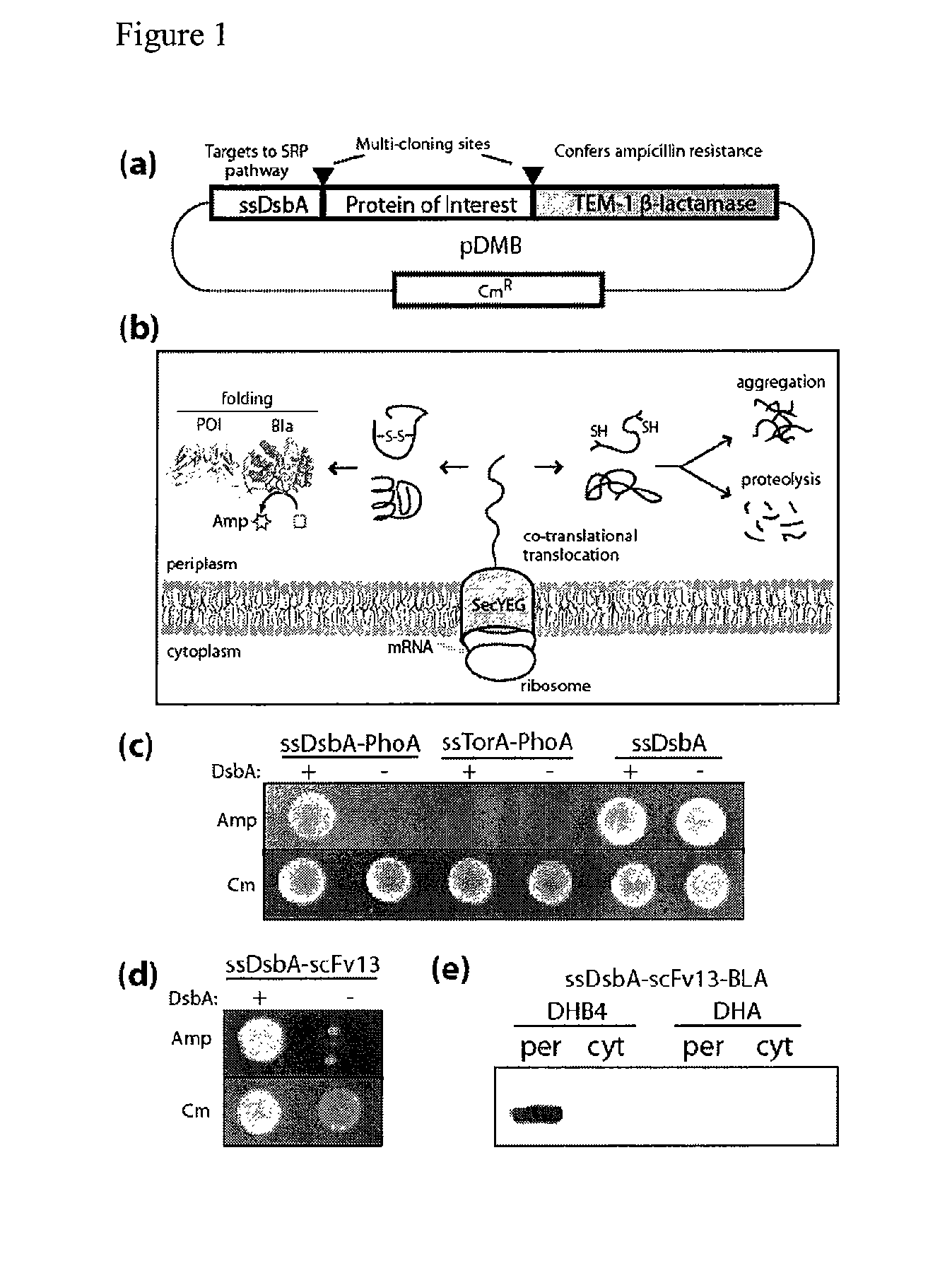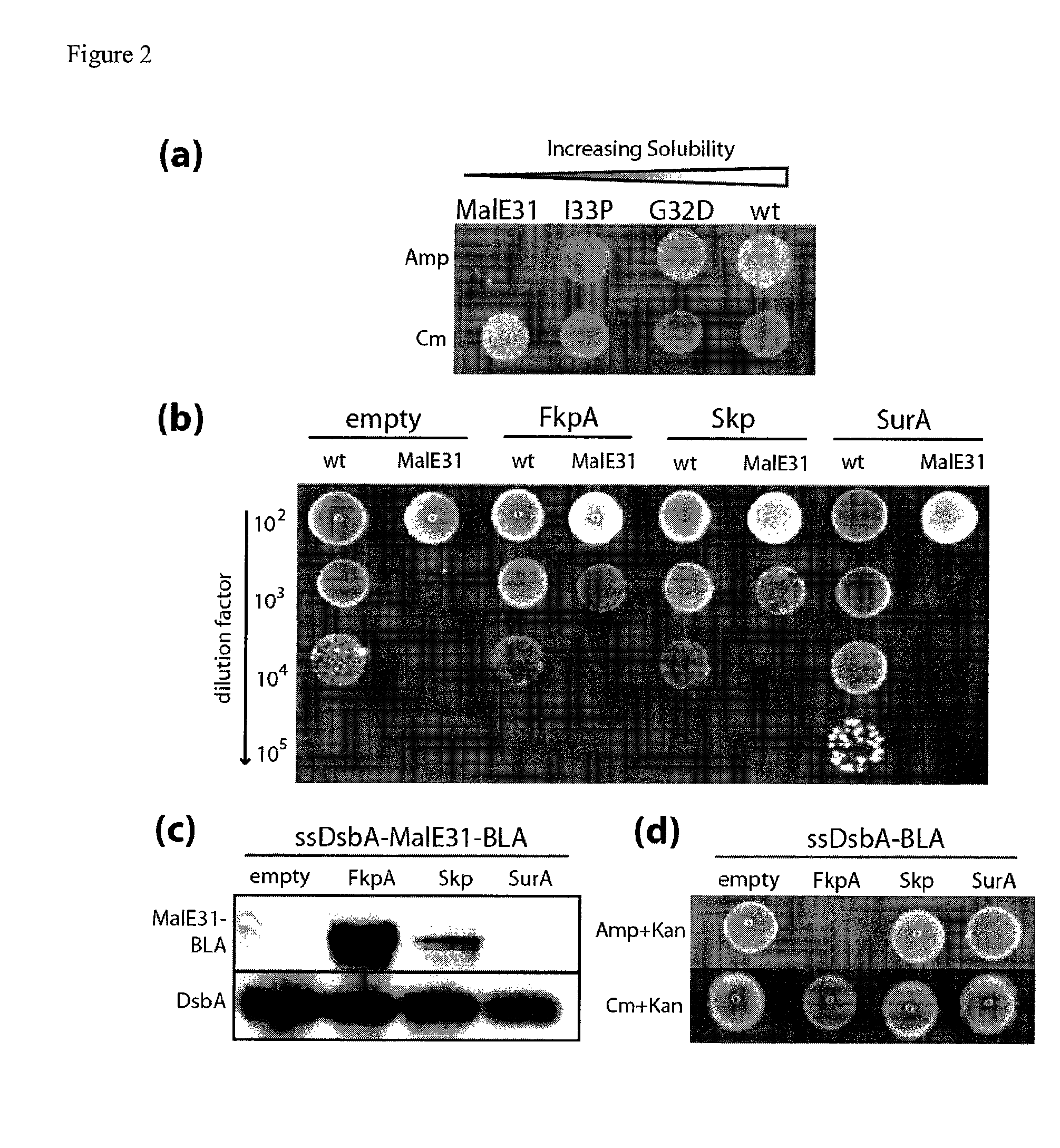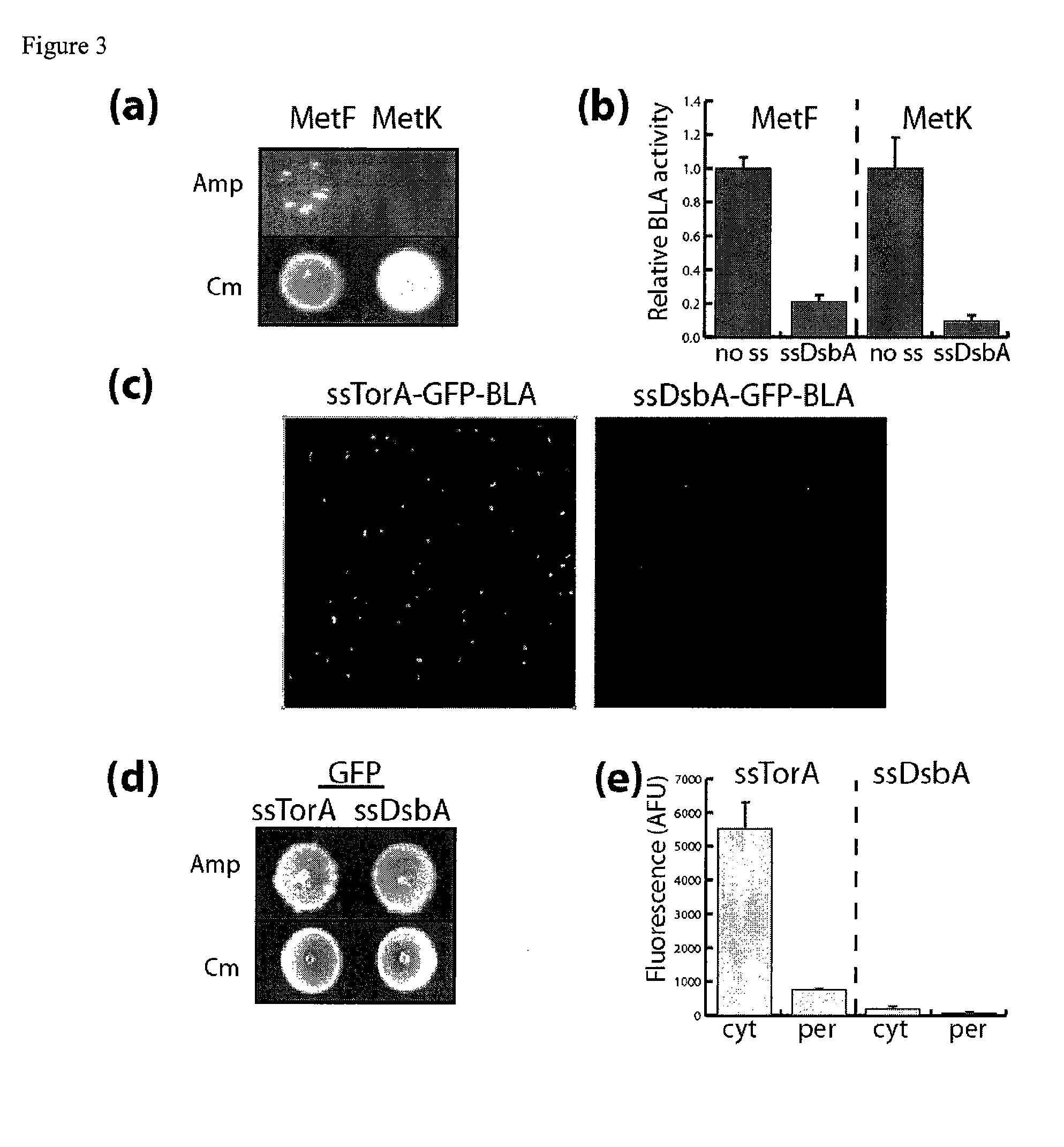Genetic selection for protein folding and solubility in the bacterial periplasm
a periplasmic protease and gene selection technology, applied in the field of microbiology, molecular biology and protein biochemistry, can solve the problems of prone to misfolding, degradation by resident periplasmic proteases, and misfolding,
- Summary
- Abstract
- Description
- Claims
- Application Information
AI Technical Summary
Benefits of technology
Problems solved by technology
Method used
Image
Examples
example 1
An Engineered Assay for Folding and Solubility in the Periplasm
[0140]We hypothesized that periplasmic export of a chimeric protein comprised of a POI fused to TEM-1 Bla would allow intimate coupling between Bla activity and the folding and solubility of a fused POI in the periplasm. Steiner, D., Forrer, P., Stumpp, M. T. & Pluckthun, A. Signal sequences directing cotranslational translocation expand the range of proteins amenable to phage display. Nat Biotechnol 24, 823-831 (2006). To test this notion, we created a tripartite gene fusion of ssDsbA-POI-Bla in plasmid pDMB (FIG. 1a). We chose ssDsbA because it has been shown to direct co-translational export of heterologous proteins through the SRP-dependent secretory pathway. By virtue of this unique protein routing mechanism, POIs would be expected to experience only minimal (if any) residence time in the cytoplasm, thereby ensuring that folding takes place predominantly in the periplasmic space. TEM-1 Bla was chosen as the reporter...
example 2
Modulating the Periplasmic Redox State Affects Folding
[0141]One of the hallmarks of the bacterial periplasmic environment is its ability to catalyze the formation of disulfide bonds, an important and often essential part of the native structure for numerous proteins. Steiner, D., Forrer, P., Stumpp, M.T. & Pluckthun, A. Signal sequences directing cotranslational translocation expand the range of proteins amenable to phage display. Nat Biotechnol 24, 823-831 (2006); DeLisa, M.P., Samuelson, P., Palmer, T. & Georgiou, G. Genetic analysis of the twin arginine translocator secretion pathway in bacteria. J Biol Chem 277, 29825-29831 (2002); Sone, M., Kishigami, S., Yoshihisa, T. & Ito, K. Roles of disulfide bonds in bacterial alkaline phosphatase. J Biol Chem 272, 6174-6178 (1997). To determine the effectiveness of our system as a reporter of periplasmic folding, we investigated E. coli alkaline phosphatase (PhoA) because this enzyme requires two disulfide bonds in order to attain a stab...
example 3
Probing intrinsic and extrinsic factors affecting periplasmic protein folding
[0145]The wildtype E. coli maltose binding protein (MBP) is known to be soluble in the periplasm. In fact, it has been used in many cases as a fusion partner to aid expression of less-soluble proteins in cells. Kapust, R.B. & Waugh, D.S. Escherichia coli maltose-binding protein is uncommonly effective at promoting the solubility of polypeptides to which it is fused. Protein Sci 8, 1668-1674 (1999). However, Betton and co-workers have isolated point mutations that cause the protein to become kinetically trapped in off-pathway intermediates which are prone to aggregation. Arie, J.P., Miot, M., Sassoon, N. & Betton, J.M. Formation of active inclusion bodies in the periplasm of Escherichia coli. Mol Microbiol 62, 427-437 (2006). A double mutant containing substitutions at residues 32 and 33 of mature MBP, called MalE31, has been shown to form inclusion bodies when expressed in the periplasm. Betton, J.M. & Hofn...
PUM
| Property | Measurement | Unit |
|---|---|---|
| concentration | aaaaa | aaaaa |
| temperatures | aaaaa | aaaaa |
| temperatures | aaaaa | aaaaa |
Abstract
Description
Claims
Application Information
 Login to View More
Login to View More - R&D
- Intellectual Property
- Life Sciences
- Materials
- Tech Scout
- Unparalleled Data Quality
- Higher Quality Content
- 60% Fewer Hallucinations
Browse by: Latest US Patents, China's latest patents, Technical Efficacy Thesaurus, Application Domain, Technology Topic, Popular Technical Reports.
© 2025 PatSnap. All rights reserved.Legal|Privacy policy|Modern Slavery Act Transparency Statement|Sitemap|About US| Contact US: help@patsnap.com



